751
Temperate Fruit Discussion / Re: Pomegranate Propagation Questions
« on: August 22, 2015, 09:50:27 AM »
Right on, thanks!
The Internet's Finest Tropical Fruit Discussion Forum!
"All discussion content within the forum reflects the views of the individual participants and does not necessarily represent the views held by the Tropical Fruit Forum as an organization."
This section allows you to view all posts made by this member. Note that you can only see posts made in areas you currently have access to.

Chaunsa as sweet as Gary (brix29) with a chalky complex taste this mango is top 10....but imagine Manohar a seedling of Chaunsa is a better overall mango
We are maybe a year or two away from releasing Manohar. The tree is vigorous and doing very well. On SoCal. It bloomed heavy this spring but we decided to hold off one more year before we let it fruit. We hope to propagated with chaunsa and sindhiri as a cocktail tree but first things first let's see how it fruits here.

starch,
not sure if you had read, but i posted that Mallika has Dussehri as one of the parents.
the other parent is Neelam, which i think is also originally from North India
I am in zone 9b also. i might buy a Mallika just to see...
The Problem with Tim is he claims he trialed mangos from all over the world for cold hardiness before he launched his breading, more accurately Kent, Haden Tommy store bought seeds, project. He actually scoured the usda grin for budwood and claims none survived our climate lol....this motivated his breading program. As Behl points out Chausan might be a true cold hardy mango as well as Manohar(seedling of Chaunsa)anwar ratol, dussehri and Sindhri( only one available in the GRIN). These Indian and Pakistani mangos are probably as close to cold hardy mangos that you could find.
Is there a way to get hold of these Indian/Pakistani mangos or are they science station type stuff only. I am in 9b and keep a Graham in a pot, but would really rather have an in-ground that doesn't freeze to the ground every year from the slightest freeze.
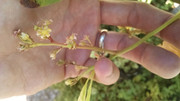
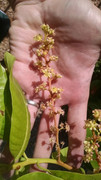
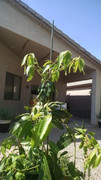
First ever flower on my Cebra dragon fruit opening tonight.Today.
DM
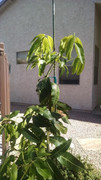
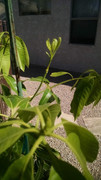
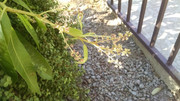
 ), but glad you are dealing with them. Thanks for sharing!
), but glad you are dealing with them. Thanks for sharing!
 But I was able to get a few bites of of some of the peaches and they were very good. And they will only get better as the tree matures, so I am very psyched!
But I was able to get a few bites of of some of the peaches and they were very good. And they will only get better as the tree matures, so I am very psyched!
Interesting -- so his rootstock trees are actually airlayers from some new variety he bred?
Could it be that he's using etiolation instead of airlayering per se to propagate his rootstock.
Etiolation has been succesfully used to propagate avocado rootstocks resistant to salinity and PC accross the from CA, to Spain and South Africa!
This is a very interesting question. I agree with you about etiolation for avocado rootstocks. I believe this is the process that Brokaw Nurseries and other use to generate clonal rootstocks. It is essentially airlayering but I recall reading (awhile ago) that there was etiolation period before the airlayering process which produces a better airlayer. Please correct me if I'm mistaken.
I have also always read that mangoes are typically difficult to airlayer. It can and has been done (by members of this forum too), but the success rate is often low. But I think you might be on to something. Maybe an etiolation period could really increase the success rate.
One would point out that this is not the preferred way to propagate a mango tree, because the mangoes grow with very large and deep taproots and an airlayer will obviously not have a taproot. But this can likely be overcome by tailoring a watering schedule and treating it like a shallow rooted tree (more frequent watering) instead of a deep rooted one (infrequent very deep watering). However this means that the airlayered rootstock has to be very salt tolerant because any water salinity will be exacerbated by this watering approach.
Good insights, there is a lot to consider about these trees. Which I admit I am very interested in. Every winter I protect my mango trees with C9 Christmas lights and frost cloth (my winter lows tend to be 28-30 F). But if a mango was bred to have a few more degrees of cold tolerance, it would make a big difference to my growing area.
Hey Starch,
the etiolation technique also called the Froelich technique is indeed used by Browkaw Nurseries. In fact I believe they also perfected it.
As is the case with mangos; having a tap root is be the best option but plants grafted onto clonal rootstock they will eventually develop a strong root system after it's established.
Here's a link to better understand the etiolation technique : http://www.avocadosource.com/WAC4/WAC4_p217.pdf
Does a trees frequently watered need to be more tolerant to salinity? I mean unless you had high levels of salt in your water, I would have thought frequent water would on the contrary wash away any excess of salts?
Anyway, just like the rest of you, I'm curious about these frost hardy mangos.... I hope we get to see the day when mangos can be grown way past their cultivation zone....
OK OK growing mangos in Paris may not be possible anytime soon, but hey.... fingers crossed!! lol
Interesting -- so his rootstock trees are actually airlayers from some new variety he bred?
Could it be that he's using etiolation instead of airlayering per se to propagate his rootstock.
Etiolation has been succesfully used to propagate avocado rootstocks resistant to salinity and PC accross the from CA, to Spain and South Africa!
Haven't figured out how to get the kegerator wheels over the threshold..

I have a Li in the ground and I love it. Healthy, disease free, fruited its first year in the ground, you can just leave the fruit to dry on the tree and they're basically like raisins. Nice snack. Normally they're grafted on a wild suckering variety and you have to pinch off suckers. Li is one of the most common and is "seedless". If you crack open lots of stones, you can find a seed or two, but I've never had luck germinating them. Dont know about the other varieties.
Basically a care free snack fruit.
 Thanks!
Thanks!The problem is not a sugar level, it is sweet but tasteless. For me jujube is nothing to bite twice, when you have garden full of cherries, peaches, plums, apricots, pears and apples.